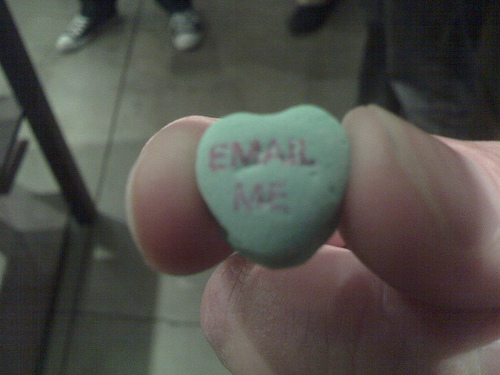
E-mail marketing is one of those tools that's easy to do, but really hard to do well. There are scores of great articles and research about E-mail marketing best practices online, but use these 5 quick tips as a starting point for successful e-mail campaigns.
1. Tease Your Audience
If your e-mail is about promoting new site content, tease your readers! Simply provide the article/blog title with a teaser description, then link it out to the main site page.
2. Show Your Personality
Don't be afraid to show personality in your e-mail messages, people are more inclined to read material that stands out in some way. You can be humorous, sarcastic, satirical or insightful. The trick is to keep your messaging relevant and interesting.
3. Keep your subject short and descriptive
A good subject line can make or break an e-mail campaign. Marketing Sherpa recommends the following steps for e-mail subject lines:
- Show value in the first two words:
Subject lines like "Top 15 Restaurant Review Sites" work better than "A Restaurant Fact Guide".
- Find the right trigger words:
Studies have shown that certain words or groups of words can increase open rates just by themselves.
- Watch the hard sell:
Try not to use hard sell language - the key is not to ask your readers to do something for you, but to offer immediate, easy value/rewards for them
- Hot brands work:
Sometimes, it's OK to ride the coat tails of well-known brands within your industry. For an Internet Marketing newsletter, it would be good to mention brands like Google, Yahoo, etc. in the subject line.
4. Include Calls to Action
You're sending the e-mail for a reason right? Either it's to keep people coming to your website, awareness for a new product or promotion, or some other reason. Either way, you want your recipients to interact with and take certain actions after reading your e-mail.
According to an article from Clickz, you should use three levels of calls to action.
"The most specific level is the actual reason for the e-mail (promotion, store opening, product recommendation, etc.). The most general is a link to your home page. In between those two is whatever is one level up from your specific call to action."
In the article, the author mentions that an e-mail promoting a new mystery novel would have a link to the book page, a link to the home page, and in the middle, a link to the mystery books section.
5. Timing is Everything
What's the best day to send an e-mail? According to one case study on
Marketing Sherpa, it's Tuesday. That said, the right day for your audience might be Wednesday, or Thursday or even over the weekend. The only way to know for sure is to test your e-mail campaigns and keep good statistics.
Photo credit:
tmarch E-mail marketing is one of those tools that's easy to do, but really hard to do well. There are scores of great articles and research about E-mail marketing best practices online, but use these 5 quick tips as a starting point for successful e-mail campaigns.
E-mail marketing is one of those tools that's easy to do, but really hard to do well. There are scores of great articles and research about E-mail marketing best practices online, but use these 5 quick tips as a starting point for successful e-mail campaigns.
